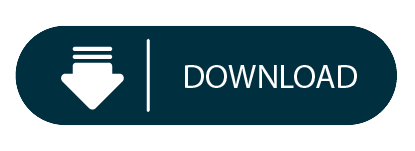Selectors
Descendant selectors
The XPath of nodes to process. A Boolean test to see if the contents should be used. The Boolean test. I was recently asked by a colleague for some advice on locators and I shared this cheat sheet with him. It contains just about everything you need to know for formulating locators for use with Selenium (and also Marionette), and includes syntax for both xpath and css selectors. INJECTION CHEAT SHEET (non-SQL) www.rapid7.com XML Injection Detection ‘ single quote. XPATH Injection Detection ‘ single quote “ double quote Exploitation.

| HTML | XPath | Note |
|---|---|---|
h1 | //h1 | ? |
div p | //div//p | ? |
ul > li | //ul/li | ? |
ul > li > a | //ul/li/a | |
div > * | //div/* | |
:root | / | ? |
:root > body | /body |
Attribute selectors
| HTML | XPath | Note |
|---|---|---|
#id | //*[@id='id'] | ? |
.class | //*[@class='class'] …kinda | |
input[type='submit'] | //input[@type='submit'] | |
a#abc[for='xyz'] | //a[@id='abc'][@for='xyz'] | ? |
a[rel] | //a[@rel] | |
a[href^='/'] | //a[starts-with(@href, '/')] | ? |
a[href$='pdf'] | //a[ends-with(@href, '.pdf')] | |
a[href*='://'] | //a[contains(@href, '://')] | |
a[rel~='help'] | //a[contains(@rel, 'help')] …kinda |
Order selectors
| HTML | XPath | Note |
|---|---|---|
ul > li:first-child | //ul/li[1] | ? |
ul > li:nth-child(2) | //ul/li[2] | |
ul > li:last-child | //ul/li[last()] | |
li#id:first-child | //li[@id='id'][1] | |
a:first-child | //a[1] | |
a:last-child | //a[last()] |
Siblings
h1 ~ ul | //h1/following-sibling::ul | ? |
h1 + ul | //h1/following-sibling::ul[1] | |
h1 ~ #id | //h1/following-sibling::[@id='id'] |
jQuery
$('ul > li').parent() | //ul/li/.. | ? |
$('li').closest('section') | //li/ancestor-or-self::section | |
$('a').attr('href') | //a/@href | ? |
$('span').text() | //span/text() |
Other things
h1:not([id]) | //h1[not(@id)] | ? |
| Text match | //button[text()='Submit'] | ? |
| Text match (substring) | //button[contains(text(),'Go')] | |
| Arithmetic | //product[@price > 2.50] | |
| Has children | //ul[*] | |
| Has children (specific) | //ul[li] | |
| Or logic | //a[@name or @href] | ? |
| Union (joins results) | //a | //div | ? |
Class check
Xpath doesn’t have the “check if part of space-separated list” operator, so this is the workaround (source).
Expressions
Steps and axes
// | ul | / | a[@id='link'] |
| Axis | Step | Axis | Step |
Prefixes
| Prefix | Example | What |
|---|---|---|
// | //hr[@class='edge'] | Anywhere |
./ | ./a | Relative |
/ | /html/body/div | Root |
Begin your expression with any of these.
Axes
| Axis | Example | What |
|---|---|---|
/ | //ul/li/a | Child |
// | //[@id='list']//a | Descendant |
Separate your steps with /. Use two (//) if you don’t want to select direct children.
Steps
A step may have an element name (div) and predicates ([...]). Both are optional. They can also be these other things:
Predicates
Predicates
Restricts a nodeset only if some condition is true. They can be chained.

Operators
Use comparison and logic operators to make conditionals.
Using nodes
You can use nodes inside predicates.
Indexing
Use [] with a number, or last() or position().
Chaining order
Order is significant, these two are different.
Nesting predicates
This returns <section> if it has an <h1> descendant with id='hi'.
Functions
Node functions
Boolean functions
Xpath W3schools
String functions
Type conversion
Axes
Using axes
Steps of an expression are separated by /, usually used to pick child nodes. That’s not always true: you can specify a different “axis” with ::.
| Axis | Step | Axis | Step |
|---|---|---|---|
// | ul | /child:: | li |
Child axis
child:: is the default axis. This makes //a/b/c work.
Descendant-or-self axis
// is short for the descendant-or-self:: axis.
Other axes
| Axis | Abbrev | Notes |
|---|---|---|
ancestor | ||
ancestor-or-self | ||
attribute | @ | @href is short for attribute::href |
child | div is short for child::div | |
descendant | ||
descendant-or-self | // | // is short for /descendant-or-self::node()/ |
namespace | ||
self | . | . is short for self::node() |
parent | .. | .. is short for parent::node() |
following | ||
following-sibling | ||
preceding | ||
preceding-sibling |
There are other axes you can use.
Unions
Use | to join two expressions.
Examples
Find a parent
Finds a <section> that directly contains h1#section-name
Finds a <section> that contains h1#section-name. (Same as above, but uses descendant-or-self instead of child)
Closest
Works like jQuery’s $().closest('.box').
Attributes
Finds <item> and check its attributes
References
- Xpath test bed (whitebeam.org)
XML Tutorial
XML HOMEXML IntroductionXML How to useXML TreeXML SyntaxXML ElementsXML AttributesXML NamespacesXML DisplayXML HttpRequestXML ParserXML DOMXML XPathXML XSLTXML XQueryXML XLinkXML ValidatorXML DTDXML SchemaXML ServerXML ExamplesXML QuizXML CertificateXML AJAX
AJAX IntroductionAJAX XMLHttpAJAX RequestAJAX ResponseAJAX XML FileAJAX PHPAJAX ASPAJAX DatabaseAJAX ApplicationsAJAX ExamplesXML DOM
DOM IntroductionDOM NodesDOM AccessingDOM Node InfoDOM Node ListDOM TraversingDOM NavigatingDOM Get ValuesDOM Change NodesDOM Remove NodesDOM Replace NodesDOM Create NodesDOM Add NodesDOM Clone NodesDOM ExamplesXPath Tutorial
XPath IntroductionXPath NodesXPath SyntaxXPath AxesXPath OperatorsXPath ExamplesXSLT Tutorial
XSLT IntroductionXSL LanguagesXSLT TransformXSLT <template>XSLT <value-of>XSLT <for-each>XSLT <sort>XSLT <if>XSLT <choose>XSLT ApplyXSLT on the ClientXSLT on the ServerXSLT Edit XMLXSLT ExamplesXQuery Tutorial
 XQuery IntroductionXQuery ExampleXQuery FLWORXQuery HTMLXQuery TermsXQuery SyntaxXQuery AddXQuery SelectXQuery Functions
XQuery IntroductionXQuery ExampleXQuery FLWORXQuery HTMLXQuery TermsXQuery SyntaxXQuery AddXQuery SelectXQuery FunctionsXML DTD
DTD IntroductionDTD Building BlocksDTD ElementsDTD AttributesDTD Elements vs AttrDTD EntitiesDTD ExamplesXSD Schema
XSD IntroductionXSD How ToXSD <schema>XSD ElementsXSD AttributesXSD RestrictionsXSD Complex
XSD ElementsXSD EmptyXSD Elements OnlyXSD Text OnlyXSD MixedXSD IndicatorsXSD <any>XSD <anyAttribute>XSD SubstitutionXSD ExampleXSD Data
XSD StringXSD DateXSD NumericXSD MiscXSD ReferenceXpath Injection Cheat Sheet
Web Services
XML ServicesXML WSDLXML SOAPXML RDFXML RSS
References
Xpath Injection Cheat Sheet
DOM Node TypesDOM NodeDOM NodeListDOM NamedNodeMapDOM DocumentDOM ElementDOM AttributeDOM TextDOM CDATADOM CommentDOM XMLHttpRequestDOM ParserXSLT ElementsXSLT/XPath FunctionsXpath Cheat Sheet Pdf
